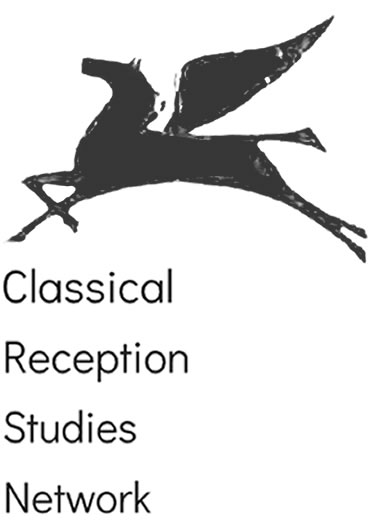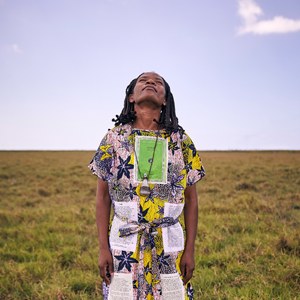This post is written by Dr Carla Bocchetti, associate member of the French Institute in South Africa IFAS-Research. Other posts include: Classical References in the Urban Landscape of Mozambique and Homer and the Indian Ocean in Maputo, Mozambique.
Can a dress intersect with a book?
Can fashion cross-reference with African women and heroines of ancient times? This exhibition aims to show the way in which an African dress can narrate the stories of women through episodes of weaving from the Iliad and the Odyssey of Homer.
Dresses in the Iliad and the Odyssey can be considered as main characters in the story, as they are narrative vehicles for developing the plot, portraying the life of women as one of the crucial aspects of the Trojan war. In the Iliad, Helen of Troy, who is the cause of the war, embroiders a purple mantle with scenes of the fighting between the Greeks and the Trojans (Il.3. 125-128). In the Odyssey, Penelope weaves a robe waiting for the return of her husband, while at the same time she crafts the trick of unweaving her work at night, to put off the time of her re-marriage as she waits for Odysseus (Od.19.134-140).
I have chosen these two passages from a classical text to situate the narrated events in new geographies, specifically the savannah of Southern Africa, where they can speak about the world of women living outside the Western tradition.
The two dresses were made of the traditional fabric of Capulana, by the designer house Wethu in Mozambique. The idea is that one dress represents the Iliad, and the other the Odyssey. Capulana is a multicolour fabric of a rectangular shape covered with wax, that has many different names in Africa, it is known as Kente, Kanga, Kitenge, or blueprint in South Africa, and has many uses as well, as skirts, blankets, scarves and are used by women also to carry their babies. In colonial times they were used by slaves. Capulanas are collected on special occasions like weddings and funerals, and therefore contain the memory of important events in the life of an African women.

The selected passages of Homer are printed on linen and then sewn into the dresses. Passages are in English and ancient Greek from the well-known edition of the Loeb Classical Library. But instead of seeing the texts as an imposition of a colonial presence in the exhibition, on the contrary the purpose is to establish a conversation with two realities that have never been in touch before, that of a luxurious edition, such as the Loeb Classical Library with its distinctive green covers, alongside the biographies of women living on peripheries with their anxieties, fears, silence, and invisibility.
The dress of the Odyssey in blue is decorated with bronze beads bought in an antique market in Nairobi. The Iliad made in yellow multicolour fabric, has a belt which is decorated with a ring of a large size, made of a seashell by a Greek jeweller based in Maputo, who works with the concept of ‘sculpture to wear’. A necklace with an antique bottle, which is a traditional object of African tribes, serves as a memory of the hospitality gifts and description of jewellery so popular in the Homeric poems.

I have chosen those two passages from a classical text to situate those events in new geographies, the African savannah, where they can also speak about the world of women living outside the Western tradition.
These two dresses were made of the traditional fabric of Capulana, by the designer house Wethu in Mozambique. The idea is that one dress represents the Iliad, and the other the Odyssey. Capulana is a multicolor fabric covered with wax, with a rectangular shape that has many different names in Africa, it is known as Kente, Kanga or Kitenge, and have many uses as well, as skirts, blankets, shawls and women use also to carry their babies. Above all, they are collected in special occasions like weddings and funerals, and therefore contain the memory of important events in the life of an African women.
The selected passages of the book were printed on linen and then sewn into the dresses. Passages are in English and ancient Greek from the well-known edition of the Loeb Classical Library. Nevertheless, instead of seen the texts as an imposition of a colonial presence in the exhibition, on the contrary the purpose is to establish a conversation with two realities that has never been in touch before, that of a luxurious edition such as the Loeb Classical Library with its distinctive green covers, alongside the biographies of women living in peripheries with their anxieties, fears, silence, and invisibility.
The dress of the Odyssey in blue is decorated with bronze beads bought in an antique market in Nairobi. The Iliad made in yellow multicolour fabric, has a belt which is decorated with a ring of a large size, made of a seashell by a Greek jeweller based in Maputo, who work with the concept of ‘sculpture to wear’. A necklace with an antique bottle, which is a traditional object of African tribes, serves as a memory of the hospitality gifts and description of jewellery so popular in the Homeric poems.

What this exhibition wants to show?
The purpose of this exhibition is to address topics that are at the center of current preoccupations, while at the same time creating an awareness for the discipline of classical antiquity of its capacity for changing its traditional focus and establishing new dialogues with other areas of research.
Classics is in a period of revising its purpose beyond imperial culture and is in the process of modifying its traditional views about history and eurocentrism. In that respect, it is interesting to situate classics in conversation with new themes, such as the way in which people think about fashion, and its impact on society and the environment.
According to social anthropologists, fashion is a term used mainly for referring to the Western way of dressing, while other ways are considered typical or local. In that respect, the dresses of this exhibition which are made of Capulana, represent two well-known stories of Western literature, create a discomfort or an epistemological disobedience in approaching both fashion and antiquity, as they emphasise the lack of contact between two realities that have never been associated in historical, artistic, or academic terms.

The Anthropocene
In an epoch of deforestation and climate change, the excess of secondhand clothes that comes from Africa creates environmental problems, as is exemplified in the case of Ghana for instance, making us aware of the importance of promoting practices that prioritise sustainability and the recycling of fashion.
Studies of the Anthropocene inform us of environmental threats and the anxiety for the future of the planet. They question the centrality of humans in the present global ecological crises and argue for the human as a being who can only exist in relation to a larger ecology of beings. The Anthropocene gives room to reflect on the way in which the traditional niche of postcolonial theories -the perspective normally used to study classics outside Europe- fall short when facing contemporary preoccupations. For instance, to consider environmental issues and fashion global networks makes it possible to use new methodologies to explore how national and transnational identities have been also constructed through design, recognising the multiple factors that take part in alternative systems of knowledge. In that respect, to turn from postcolonialism to global networks makes it possible for classical antiquity, the core discourse of European cultural hegemony, to advance towards other areas of research.
The Kruger Park / Mozambican natural parks, which is the place where the photos were taken, confront the idea of nature as an identarian image of Africa, and address the invention of a continent’s environmental imagination.
In reference to antiquity, Greek myths inform us of different types of encounters between women and nature, such as the case in the Iliad of nymphs lying with the river god Scamander, or the famous story of Leda and the swan and Daphne’s transformation into a laurel tree. In decolonizing nature and classical studies through the artistic installation of the dresses of the Iliad and the Odyssey made of Capulana, aspects such as the world of women, slavery, race and feminism are juxtaposed in the photographs to wildlife and rivers so as to respond to foundational myths of the region going beyond the colonial archives.


